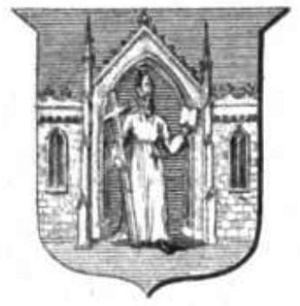First attestation 1114 x 1120 Dedication Trinity | Metropolitan before 1472 None | |
 | ||
Metropolitan after 1492 | ||
The Diocese of Moray was one of the most important of the medieval dioceses in Scotland.
Contents
History
It was founded in the early years of the 12th century by David I of Scotland under its first bishop, Gregoir. It was suppressed in 1638 and never revived a s a titular see.
Bishops of Moray
Bishop Bricius organised the constitution of the church, but it was Bishop Andreas who increased the number of dignitaries and prebend canons and was responsible for gaining large grants of land from his kinsmen, the powerful de Moravia lords, as well as the king. In the year of his death, Andreas changed the cathedral's constitution to that of Salisbury.
Other Bishops made a lasting impact on the diocese and probably the most important of these was Alexander Bur (1362—1397), who championed the right of the Moray church to retain its property against a ruthless magnate, Alexander Stewart, Earl of Buchan and called the Wolf of Badenoch.
Apparently the see served repeatedly as stepping stone:
The last of the Roman Catholic bishops was Patrick Hepburn, who alienated almost all of the lands pertaining to the church at the time of the Scottish Reformation.
Extent and Deaneries
The diocese covered a large area extending from Huntly in the east, within a few miles of the Knoydart Peninsula in the west and, in the south-west, to the Atlantic Ocean at an inlet of Loch Linnhe in Lochaber.
It was divided into the four deaneries of Elgin, Inverness, Strathbogie and Strathspey. Each of these deaneries contained a number of parishes that provided the mensal and prebendal means for the church.
Cathedrals
The early Moray bishops did not have a fixed seat but took their cathedrals to the culdee centres at Birnie, Kinneddar and lastly Spynie.
Spynie Cathedral
Bishop Bricius de Douglas finally obtained permission from Pope Innocent III on 7 April 1206 to fix the cathedral at the Church of the Holy Trinity at Spynie.
Authorisation was also granted to create a chapter of eight canons to administer the cathedral. The chapter based its constitution on that of Lincoln Cathedral. It is possible that this decision may have been influenced by the fact that Bricius' immediate predecessor was Bishop Richard de Lincoln.
Elgin Cathedral
Bricius saw that Spynie was too remote from those it sought to serve and, with a need to ensure the safety of the clergy, petitioned the pope to grant the moving of the church to relative safety of Elgin.
It was not until after his death, however, that this was achieved under the episcopate of Bishop Andreas de Moravia. This transference took place with the authority of Pope Honorius III and King Alexander II on 19 July 1224.
